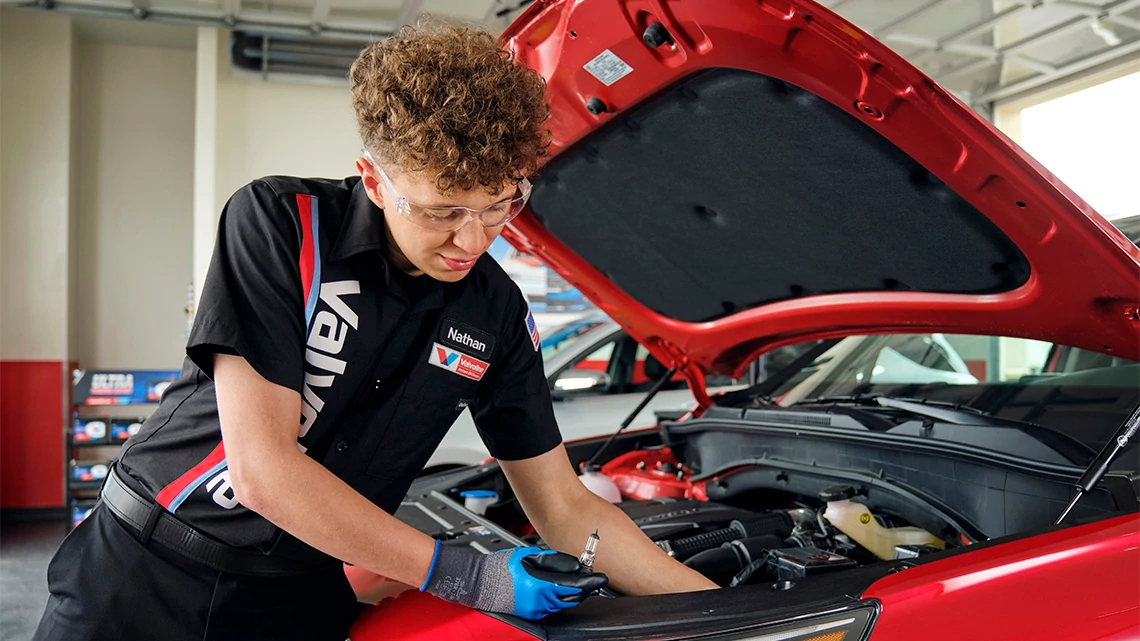AARP Hearing Center
Return with us now to those thrilling days of yesteryear, back when car buyers decided practical didn't have to mean boring, and started snapping up sporty, high-performance versions of the plain family sedans that most everybody drove in the 1950s and ‘60s and into the ‘70s.
Perhaps you recall the Chevrolet 1960s sedans with 409-cubic-inch engines (6.7 liters in todayspeak) that spawned the Beach Boys hit “409.” Or the 1959 Chevy sedans with 348 cubic-inch (5.7-liter) engines, about which Car and Driver said: “Exhilarating, thrilling, and amazing to drive. … Comes on right now with that booming, hard-slamming thunder that we've learned to associate with wild, full-race V-8s.”
Or Ford's 1960s Galaxie with 406 cubic-inch (6.65-liter) V-8 that generated no hit songs but snagged this praise from Car and Driver in 1962: “Something like Ferrari performance at a fifth the price."


AARP Membership— $12 for your first year when you sign up for Automatic Renewal
Get instant access to members-only products and hundreds of discounts, a free second membership, and a subscription to AARP the Magazine.
And Chrysler's 300-series sedan in the 1950s and ‘60s, and Pontiac's Tempest economy car stuffed full of roaring V-8 to justify the GTO name and earning Motor Trend's accolades in 1970: “The best American car we have ever driven, and probably one of the five or six best cars in the world for the enthusiast driver."
Such mixing of giddy-up with practicality trickled on even into the fuel-economy-obsessed 1980s that were a reaction to the fuel shortages and price increases of the ‘70s. Famed hot-rodder Carroll Shelby turbocharged the 1980s Dodge Omni economy car into a fearsome muscle machine, showing the party wasn't quite over for those wanting fun with their fuel-efficient, practical four-door sedans.
Ford stuck a toe in modern waters with the 1989 Taurus SHO — for Super High Output — sedan, intending it to be a limited-production item. But it was popular enough that Ford kept it through 1999 then resurrected it for the 2010 model year and has continued it through this year.
Staid vehicles on the outside
So we've had an enduring affair with more-or-less ordinary, practical machines underpinned with serious sporting credentials. And the formula is abloom anew in the SUV universe, which is about 48 percent of all new vehicles sold, according to Edmund.com data.
SUVs are by far the favorites of new-vehicle buyers in households headed by people 55 and older. They pick SUVs 54.1 percent of the time, according to a data provided for AARP by IHS Markit, which analyzes business information. Second place? Sedans at just 20.9 percent.
Go-fast, turn-sharp, stop-fast SUVs from common car-like crossovers such as Hyundai Niro and Ford Edge ST to truck-based outfits such as Chevrolet Tahoe RST Performance Edition are springing up fast.
"That's spot-on. As vehicle types change, there'll always be performance versions,” says Matt DeLorenzo, senior managing editor at Cox Automotive.
It predates cars, he figures, back to when the taunt was, “I've got four horses to your two."
The company owns more than two dozen brands including Kelley Blue Book and Autotrader.
"It's the same (type of) buyer who was buying the high-performance sedan” decades ago, says Mark Takahashi, a senior editor at researcher Edmunds.com.
The power is within
Icons of the current phenomenon are Ford's ST versions of its fully redesigned 2020 Explorer and its updated Edge, launched as a 2019.
But others are flying only slightly lower on the radar. Some are camouflage jobs that carry no get-outa-my-way nomenclature but have snappy engines and often upgraded suspensions and brakes.
Of course, this is happening because of the money to be made.
"Ford is genius,” says Ian Beavis, chief strategy officer at researcher and consultants AMCI. “They've found a market and price point” that are begging to be filled.
"There is a percentage that doesn't want a boring vehicle for their daily driver,” he says.
Beavis has noticed it especially among up-market buyers, he says.
"I've got a couple of friends who've gone from (Mercedes-Benz) AMG (high-performance) sedans into Mercedes’ SUVs. They're loyal to Mercedes, but they want to be able to get into and out of their vehicles and have room for all the grandkids,” he says, noting that many SUVs have a handy step-in/step-out height. You needn't climb up nor drop down.
"And you're not compromising much in the SUVs compared to the sedans,” Beavis says.
Take the ST Edge, for instance. You can get huge brakes and fat, super-traction tires paired with the ST's standard firm suspension, responsive steering and V-8-like performance from its turbocharged V-6.
The average new-car buyer is 54, Beavis’ data show, and his research also shows that's a time of fat assets and wallets, so $50k or even $60k and more for a hoot of time behind the wheel can seem reasonable, he says.
Here are some of those frisky SUVs for all you feisty grownups along with a few of those old models that you could consider their spiritual predecessors.
You can find more sporty SUVs if you wander upscale into Audi/BMW/Mercedes-Benz/Porsche territory, and some starter models from those brands are priced about even with those we list. We've tried to stay with the mainstream nameplates, figuring they'd be of the most interest to the most people.
1962 Chevrolet Bel Air

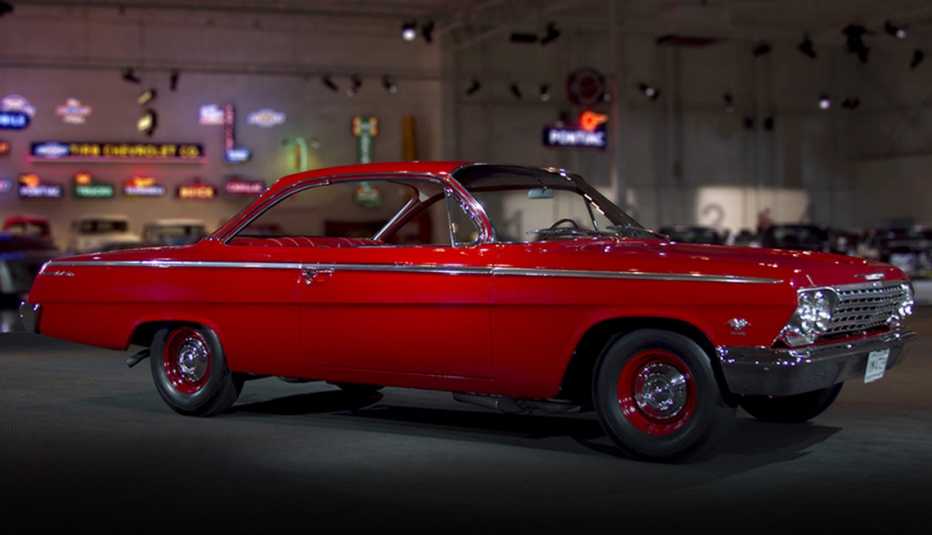
This car's 409-cubic-inch engine, 6.7-liter in today's nomenclature, is an early example of a very powerful engine in an otherwise ordinary family car.
This vehicle is like the car that inspired the 1962 Beach Boys’ song “409,” says the GM Heritage Center. The song was the back or B side of the 45-rpm single recording “Surfin’ Safari” that was the initial hit song. Today's frisky SUVs don't have such fortuitous marketing luck.
1962 Ford Galaxie

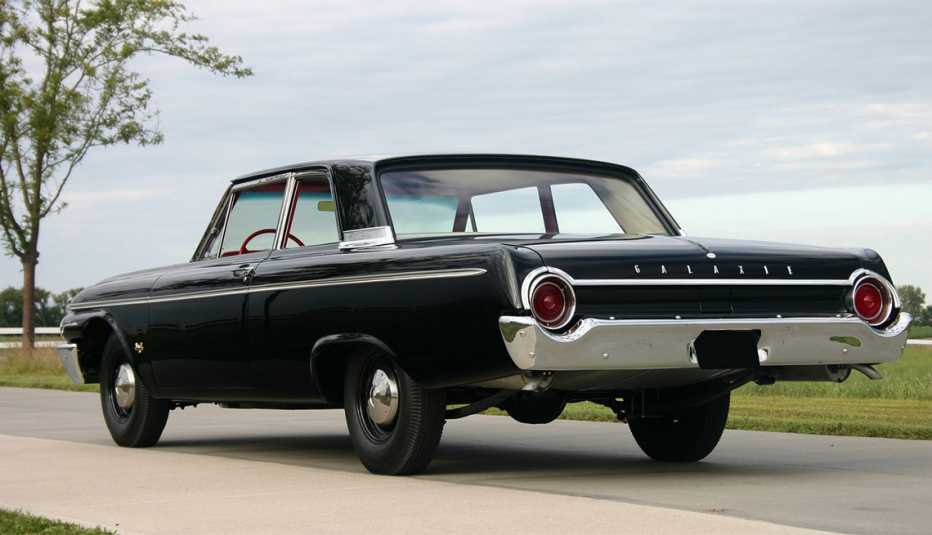
Another forerunner of today's quick family SUVs, this plain-vanilla family sedan has a 406 cubic-inch engine (6.65-liter), giving the unassuming Galaxie a fair shot at matching the 409-equipped Chevys of the era though the Fords never had the pop-culture draw that the Chevrolets got from the Beach Boys. This car was sold by Mecum Auctions in 2011 at an Indianapolis event.
Ford Edge ST

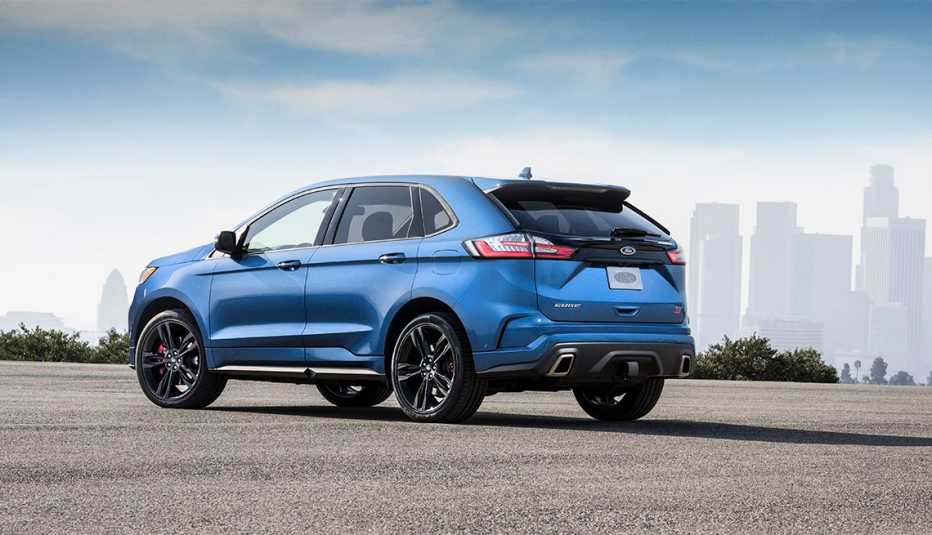
The lowdown: Skimpy storage and only modest cargo space is in this SUV, but the turbocharged 2.7-liter V-6 jumps and runs as if called to an emergency.
No, it's not Porsche quick, but it can go nonetheless. Maximum power is 335 horsepower, 380 foot-pounds on premium fuel. Regular gas is acceptable but Ford doesn't say how much power you lose.
Its rear seat can't match the Honda Passport's roominess but is well tailored for those who do fit back there. The front seat is superb, almost therapeutic.
We did a 2,700-mile summer road trip with four tall folks and survived but sorely missed last year's spacious crew-cab pickup. We would prefer a conventional shift lever to the dial-control for the transmission.
Capacity: Tows 3,500 pounds, carries 950 pounds
Fuel efficiency: 19 mpg city, 26 mpg highway
Price: Starts at about $44,000, but you can add a fast $10,000 to get the full-frisky model with big brakes and tires and appurtenances
Ford Explorer ST

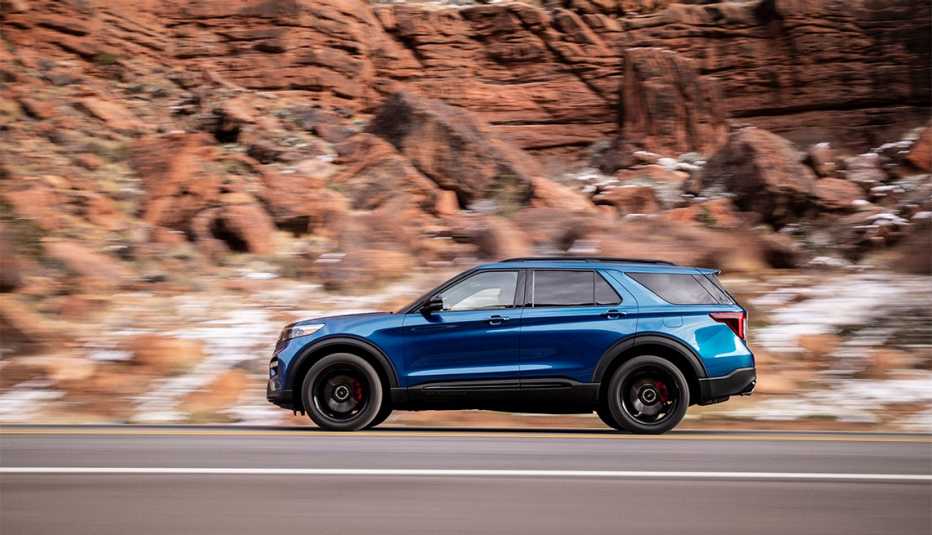
The lowdown: Explorer is a full redesign for 2020 and gets a sporty ST version. The ST's 3-liter turbocharged V-6 is rated 400 horsepower and 415 foot-pounds of torque for a flat-out top speed of 143 mph.
The unusual new chassis is a rear-drive setup with four-wheel drive, standard on the ST, triggered as needed. That's backward\ from what's become a common front-drive bias.
Explorer is considered a three-row mid-sized SUV and “the back row's bottom cushion is low and unsupportive” Car and Driver says. Cars.com's Brian Wong liked the strong engine, 10-speed transmission and high-performance brakes but says the suspension isn't firm enough.
Capacity: Rated to tow 5,600 pounds
Fuel efficiency: 18 mpg city, 24 mpg highway
Price: Starts at about $56,000
Acura RDX

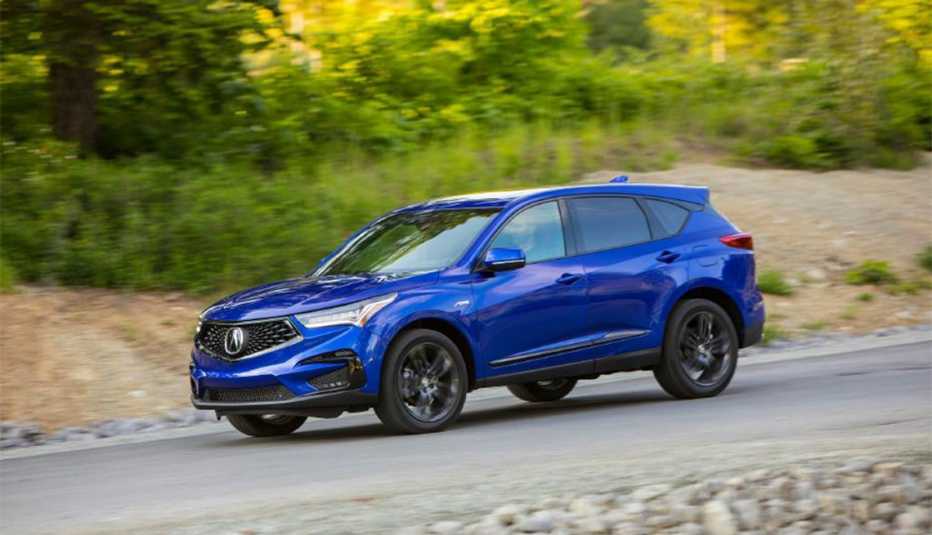
The lowdown: Choose front- or all-wheel drive, but the underpinnings come only one way: fat tires for traction and peppy turbocharged four-cylinder.
It's a sporty machine from the get-go, as you can tell from the TV ads showing the RDX hanging its tail out cornering at a test track. Acura is cultivating a sporting image to snag younger buyers, but even so 60 percent of RDX buyers are 46 and older, Acura says.
We noticed a slight lag between applying a hard throttle and feeling the engine response. And you must be OK with the push-button transmission and touch-pad, rather than touch-screen, control of the infotainment screen.
Capacity: Maximum towing capacity of 1,500 pounds
Fuel efficiency: 22 mpg city, 28 mpg highway for front-wheel drive; 21 mpg city, 27 mpg highway for all-wheel drive
Price: Starting at $37,600 for front-wheel drive, $39,600 for all-wheel drive
Chevrolet Tahoe

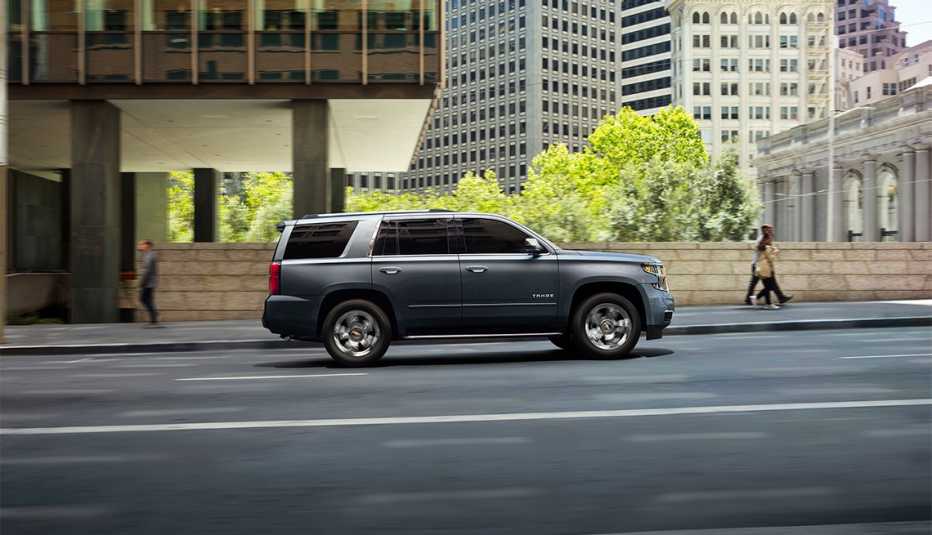
Chevrolet Tahoe
The lowdown: Feisty folks will opt for the Premier model with a frisky 420-horsepower, 6.2-liter V-8 instead of settling for the standard 355-horsepower 5.3-liter.
The 6.2 “can handle the biggest jobs while pushing acceleration times into sports-car territory,” Kelley Blue Book opines.
The 6.2 comes with a 10-speed automatic transmission vs. the 5.3-liter six-speed automatic, and Chevy's road-taming Magnetic Ride Control suspension, makes the 6.2-liter engine a favorite feature of the Tahoe, according to Kelley Blue Book reviewers.
Capacity: Rated to tow 8,100 pounds with four-wheel drive, 8,400 pounds with rear-wheel drive
Fuel efficiency: 15 mpg city, 22 mpg highway
Price: That bigger V-8 bumps the price to a starting figure for rear-wheel drive models to about $69,000




































































